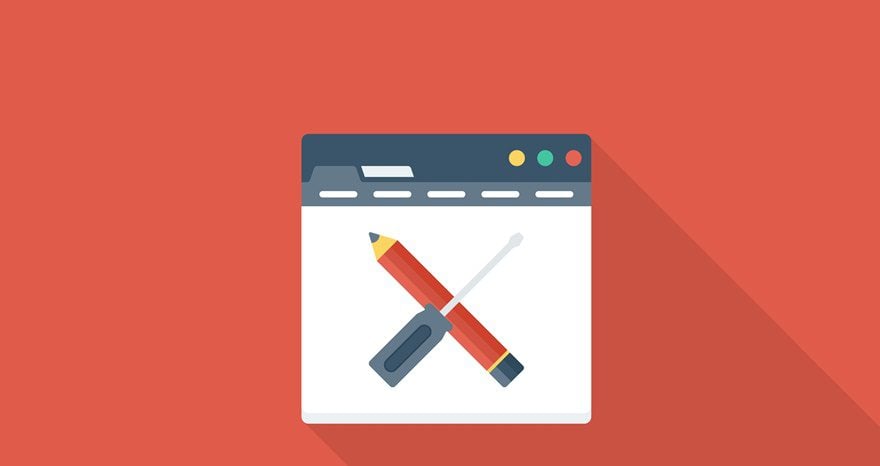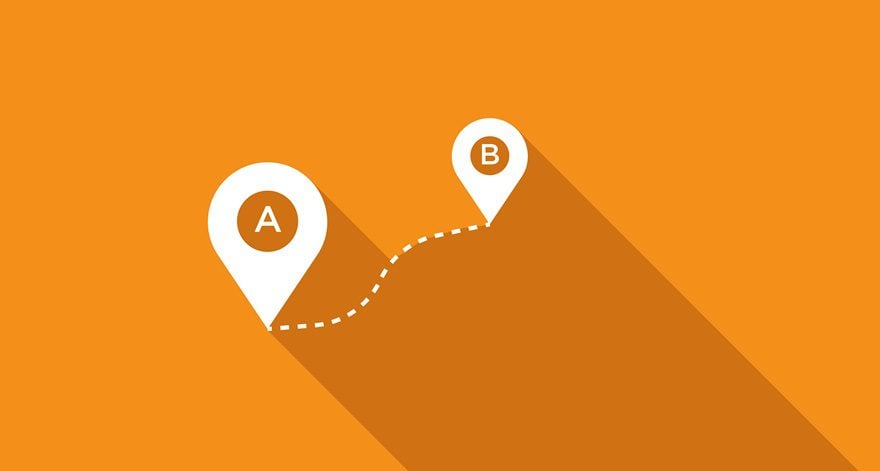Creating an eCommerce website and figuring out how you’ll approach your eCommerce website design is a process that can take a lot of time. Because, in the end, your eCommerce website design is as important as the products you want to sell. Even more; a good design will help you boost your conversion rates and achieve the goals you’ve set.
To help you with that, we’ll be sharing 10 principles of great eCommerce website design that you should bear in mind while designing your eCommerce website.
- 1 1. Go Niche (And Let Your Design Represent Your Niche’s Needs & Desires)
- 2 2. High-Quality Product Photography (Including Product Preview)
- 3 3. Minimalistic Design (With an Eye for Detail)
- 4 4. Easy Navigation
- 5 6. Keep Search Bar Within Reach at All Times
- 6 7. Clear & Short Calls to Action
- 7 8. Build Trust (Highlight Safe Payment Solutions)
- 8 9. Customer Reviews For Each Item
- 9 10. Optimize for Mobile
- 10 Final Thoughts
1. Go Niche (And Let Your Design Represent Your Niche’s Needs & Desires)

Image by LuckyVector / shutterstock.com
First of all, the easiest way to make an eCommerce website as functioning as possible is by choosing and dedicating your products to one particular niche. On many aspects, it’ll be easier to understand and act upon the behavior of your target audience. When it comes to SEO, for instance, you’ll be able to focus on the long-tail keywords your audience is looking for.
The same counts for the website design you choose to go with. Each niche has different needs. Depending on the products you’re trying to sell and the target audience you’ve analyzed, you can act upon these needs and represent them within your website design. Say, for instance, that you are selling clothing on your eCommerce website. Rather than sharing too many details about the clothes, you can focus on why it’s something your visitors need to have in their closet. One of the things you can do on your product pages is share Instagram pictures of people who are already wearing these clothes.
2. High-Quality Product Photography (Including Product Preview)

Image by Classica2 / shutterstock.com
Another essential factor that’ll help you boost your eCommerce website design is high-quality product photography. People are visual creatures and although in the past it might have been ‘okay’ to use imagery with standard quality, that’s not the case anymore. High-quality images are automatically linked to professionality and trustability. If you’re able to portrait your product beautifully, and in a way that people will get as much information out of an image as possible, the chances that your conversion rates will go up are tremendously higher.
But don’t limit your product photography to product images only. People are all about imagination. They want to see what they can do or achieve once they purchase a product. That’s why putting a product in context and showing your visitors pictures of it in action can help them in their decision process. For instance; if you own a jewelry eCommerce website, do not only post pictures of the jewelry itself. Choose instead to have a photoshoot and show how the jewelry can be combined with different outfits.
3. Minimalistic Design (With an Eye for Detail)

Image by Dinosoft Labs / shutterstock.com
An eCommerce website usually already has a lot of content for visitors to process. Visitors are faced with dozens of products that have a lot of information such as descriptions, product information and more. Adding a too fancy design on top of that will only make it harder for visitors to process everything on your website.
Therefore, it’s better to go for a minimalistic design which most likely will include neutral color use (such as a white background color). Don’t mistake minimalism with simplism though, the website still has to reflect professionality and effort.

Image by Zaur Rahimov / shutterstock.com
Having a menu that easily shows you around the different categories and products that your eCommerce website offers is another crucial part of your eCommerce website. People want to navigate smoothly through a website and the different products that they offer. Depending on the number of products a website has in store, it is recommendable to classify them into as specific categories as possible. If you, for instance, sell technology on your website, you can divide them within the different types of technology first, such as:
- Computer
- Mobile
- TV
- Photo & Video
- Audio
- Gaming & Entertainment
Afterwards, you can refine the categories even more and eventually end up classifying the different products by brand and other filters. The structure of your menu should, above all, be logical and easy to follow.
Some WordPress menu plugins that we’d recommend to help you build more effective menus would be: Max Mega Menu, DiviMenus and Ubermenu.
Tip: Always build your website menu (and website in general) for the least intelligent person in your audience. That way, you make sure everyone can follow along.
6. Keep Search Bar Within Reach at All Times

Image by Orange Vectors / shutterstock.com
Something that increases the user-friendly factor of your eCommerce website is having a search field within reach at all times. By making sure a clearly visible search field is close by, people will feel like they can get wherever they want on your website without constantly having to navigate from one place to the other. This is particularly attractive to the visitors on your website that already know what products they are interested in. In many of these cases, the only thing they want to do is compare the products to one another. The search field makes that an easy task and reduces the time they have to spend on your website looking for products instead of figuring out whether or not they want to make a purchase.
This is particularly attractive to the visitors on your website that already know what products they are interested in. In many of these cases, the only thing they want to do is compare the products to one another. The search field makes that an easy task and reduces the time they have to spend on your website looking for products instead of figuring out whether or not they want to make a purchase.
Out of the many eCommerce plugins available, when it comes to your search field, we’d recommend using SearchWP. It replaces WordPress’ default search engine with a customizable, advanced search system that delivers more accurate and relevant results.
7. Clear & Short Calls to Action

Image by shutteratakan / shutterstock.com
You can find calls to action on all types of websites out there, but especially on eCommerce websites. Because of all the present content, it’s highly recommendable to make your calls to action as short and clear as possible. That way, you can easily connect to the behavior of your visitors, which is in most cases looking through products quickly and decisively.
8. Build Trust (Highlight Safe Payment Solutions)

Image by Igogosha / shutterstock.com
Building trust is also important in order for your online sales funnel to work. Although online shopping has been existing for a while already, people are still pretty skeptical about it and won’t purchase items on every eComomerce website they come across. In cases where your eCommerce site is still pretty new, building that trust goes hand in hand with the results you achieve. One of the things you can do to help build that trust, is put the safe payment solutions people are already familiar with (such as PayPal) in the spotlight. That way, they’ll be confident that their purchase is completely safe and the purchasing barrier will become smaller.
9. Customer Reviews For Each Item

Image by Jiw Ingka / shutterstock.com
Another essential aspect that’ll determine how willing your clients are to go over to purchasing your products is the product review. It’s one of the first things people look at when they’re seeking to buy a product, whether they already have experience with the product or not.
Make sure the reviews on your product pages are easy to find and easy to follow as well. Since people will spend a lot of time looking through them, the best thing to do is make that time as enjoyable to them as possible. You can do that, for instance, by allowing a star rate, using an easily readable font and providing them with the average score for the product.
10. Optimize for Mobile

Image by Mix3r / shutterstock.com
The last principle is evident but not to be taken for granted. The mobile version you create must have the same effect on the visitors as the desktop version has. In an era where mobile and mobility is only increasing, mobile will be one of the primary sources of your profit.
It’s not that easy to bring over the same feeling and message on mobile as it is on desktop. The screen size of mobile phones makes it harder for people to navigate through your website and keep their interest. Giving your mobile eCommerce website the needed attention and adjusted design is thus crucial.
Final Thoughts
In this post, we’ve shown you some principles of great eCommerce website design. Creating your own eCommerce website can take up a lot of time and effort, but these tips will make it easier to know the priorities that’ll bring your next project to a good end. If you have any questions or suggestions; make sure you leave a comment in the comment section below!
Be sure to subscribe to our email newsletter and YouTube channel so that you never miss a big announcement, useful tip, or Divi freebie!
Featured Image by vasabii / shutterstock.com









Great page, thanks much!
Nice article. Thank you for these tips.
The final paragraph of point 6 is written twice.
I agree something to help Woo commerce look better and as if belongs with the rest of our Divi sites.
A good article regarding eCommerce. Credits to Writer.?
Very nicely explained. Thank you for this lovely article.
Great review of the basics.
This is nice and clear even though the point 5 is missing 🙂
5. Use lots of white space…
Like others here I am praying this is a first step teasing for some updates on the Woocommerce modules of Divi. Product cards (or at least a few different product layouts) have been mentioned, and a lot of us would love to see this implemented without the use of 3rd party plugins. A bit more customization and standard things like displaying Product variation swatches (especially colors !) below products on the shop display would also be something you’d expect from the amazing Theme that is Divi. I recently had to go with a different theme than Divi (which I hate doing btw…) simply because its e-commerce solutions where not on par with what the market currently proposes. We know you don’t want to bloat the theme, which is good, but I’m sure a lot of things can be done with json and react on that part 😉 Love you guys !
There is definitly room for improvement for WooCommerce integration and customisation, at this point it is one of Divi’s weak points. 😐
Benar sekali, saya sangat sepakat kalau gambar photograpy sangat besar pengaruhnya kepada desain website kita. Jangan lewatkan bagian satu ini
Hi, usefull article. Do you plan to add more woocommerce modules? It would be very nice to have some product cards and prodict pages. Thanks.
This is so good! Thank you!
Do You will to add in the future option to build product card by Divi builder?